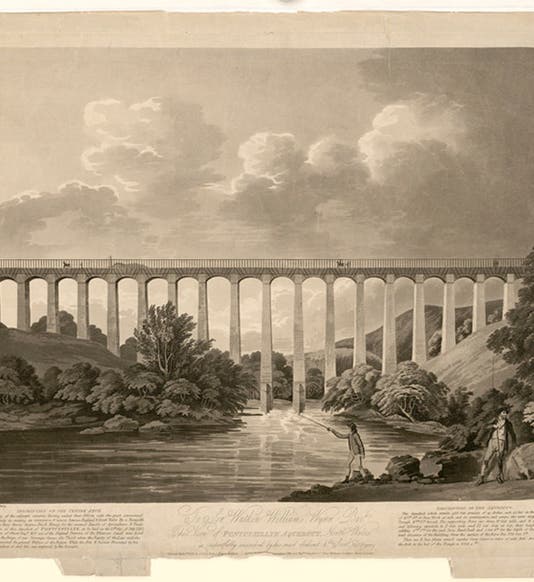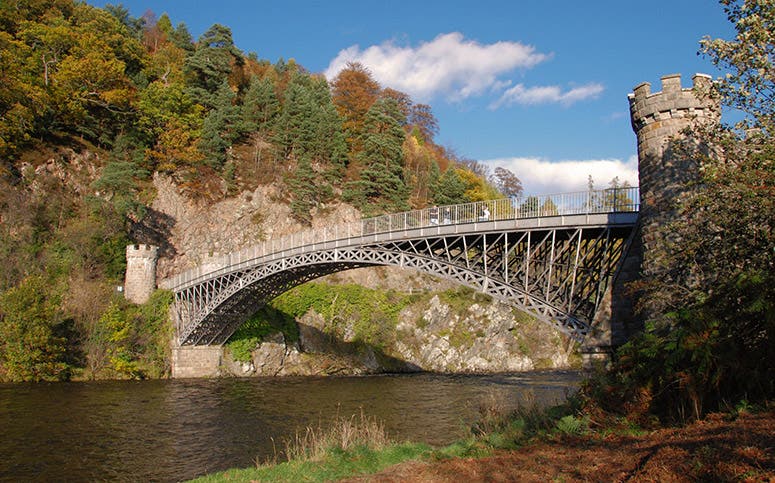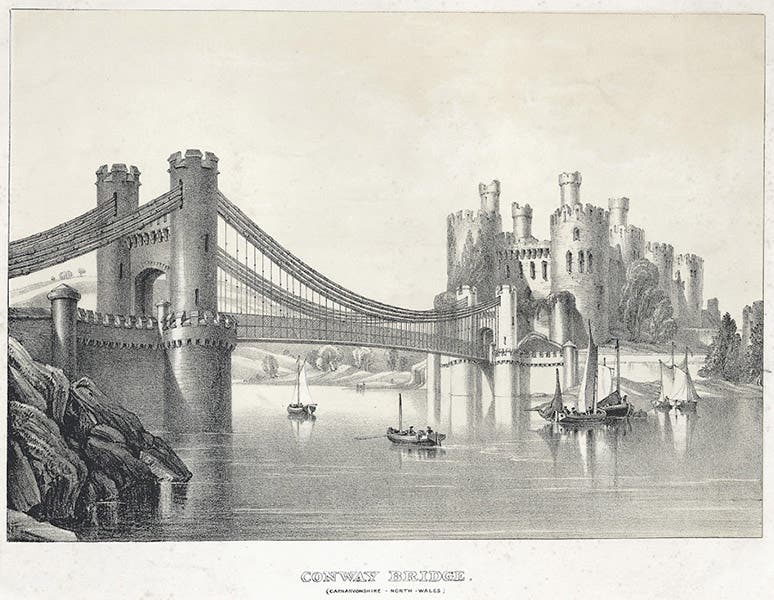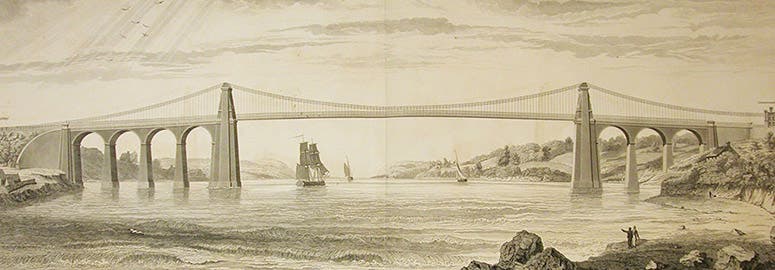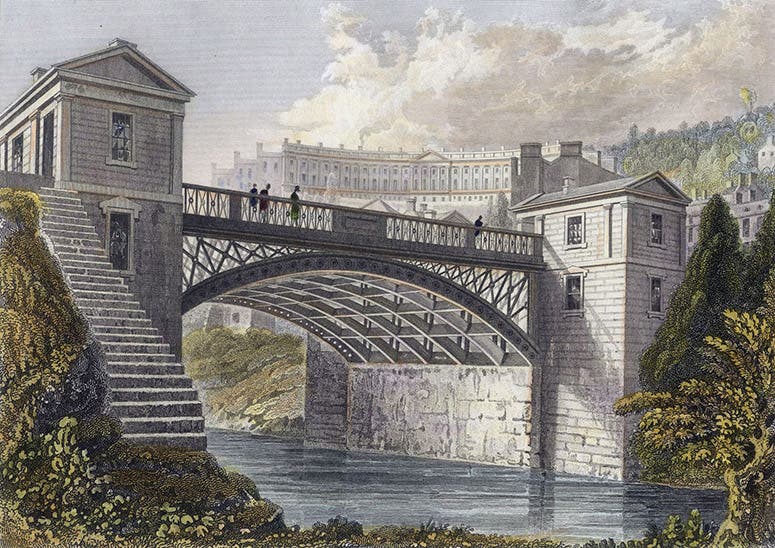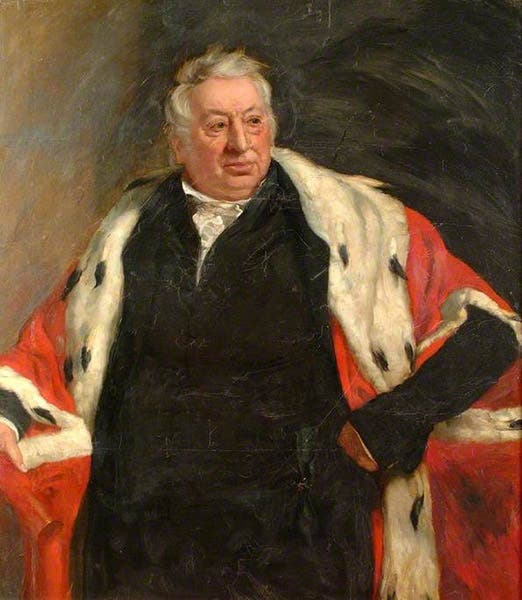Scientist of the Day - William Hazledine
William Hazledine, an English ironmaster, died Oct. 26, 1840, at the age of about 77; his date of birth is not known. Many people have heard of Thomas Telford, the civil engineer who designed the Menai and Conwy suspension bridges, as well as other bridges and aqueducts. Fewer know of Hazledine, who actually built those bridges, and who provided the cast iron and wrought iron pieces needed for their construction. Hazledine worked out of Shrewsbury in Shropshire, where Robert and Susannah Darwin would soon be raising a promising young child, and one of Hazledine’s first commissions for Telford was to provide the cast iron trough for the Pontcysyllte Aqueduct that carried the Llangollen Canal over the River Dee in northeastern Wales, completed in 1805.
We show a contemporary view, an engraving, of the tall structure (first image) and a modern photo looking down that shows the iron trough that was manufactured and installed by Hazledine (second image). Telford then took on the assignment to build the Craigellachie Bridge in Moray, Scotland, with its Gothic stone towers; the bridge opened in 1814, and Hazledine provided all the cast-ironwork (third image, just below).
In the 1820s, Telford designed the graceful suspension bridge over the River Conwy to Conwy Castle (fourth image just above). He followed that with the longer, higher, and even more graceful structure that spans the Menai Straits to Anglesey (fifth image, just below). Both bridges were finished in 1826. The cables for the bridges were fashioned from wrought-iron links, thousands of them, which Hazledine forged, tested individually, and then installed (sixth image, below). The links at Menai were replaced by steel ones in the 20th century, but the Conwy Suspension Bridge still has the original wrought-iron cables that Hazledine supplied.
Several other bridges built of Hazledine iron are worthy of our notice: The beautifully filigreed Aldford Iron Bridge, crossing the River Dee in Cheshire, which Telford also designed and which was completed in 1824 (seventh image, above); the Mythe bridge across the River Severn in Tewksbury (Telford design, 1826); and the Cleveland Bridge in Bathwick, designed by Henry Goodridge and built in 1826 (eighth image, below).
There is a portrait of the grand old iron-bridge master, by Thomas Weaver, in the Shrewsbury Museum and Art Gallery (ninth image, below). There is another portrait in the appropriately named Ironbridge Gorge Museum in Shropshire. In both portraits, he looks like a man who would have been nice to have had for an uncle when you were young.
Although Hazledine was a master of the iron bridge, he had nothing to do with the original Iron Bridge over the River Severn in Shropshire, which was built before his time. That was cast and constructed by Abraham Darby III and opened in 1781. We discussed that bridge in a post on Darby in 2019.
Dr. William B. Ashworth, Jr., Consultant for the History of Science, Linda Hall Library and Associate Professor emeritus, Department of History, University of Missouri-Kansas City. Comments or corrections are welcome; please direct to ashworthw@umkc.edu.

